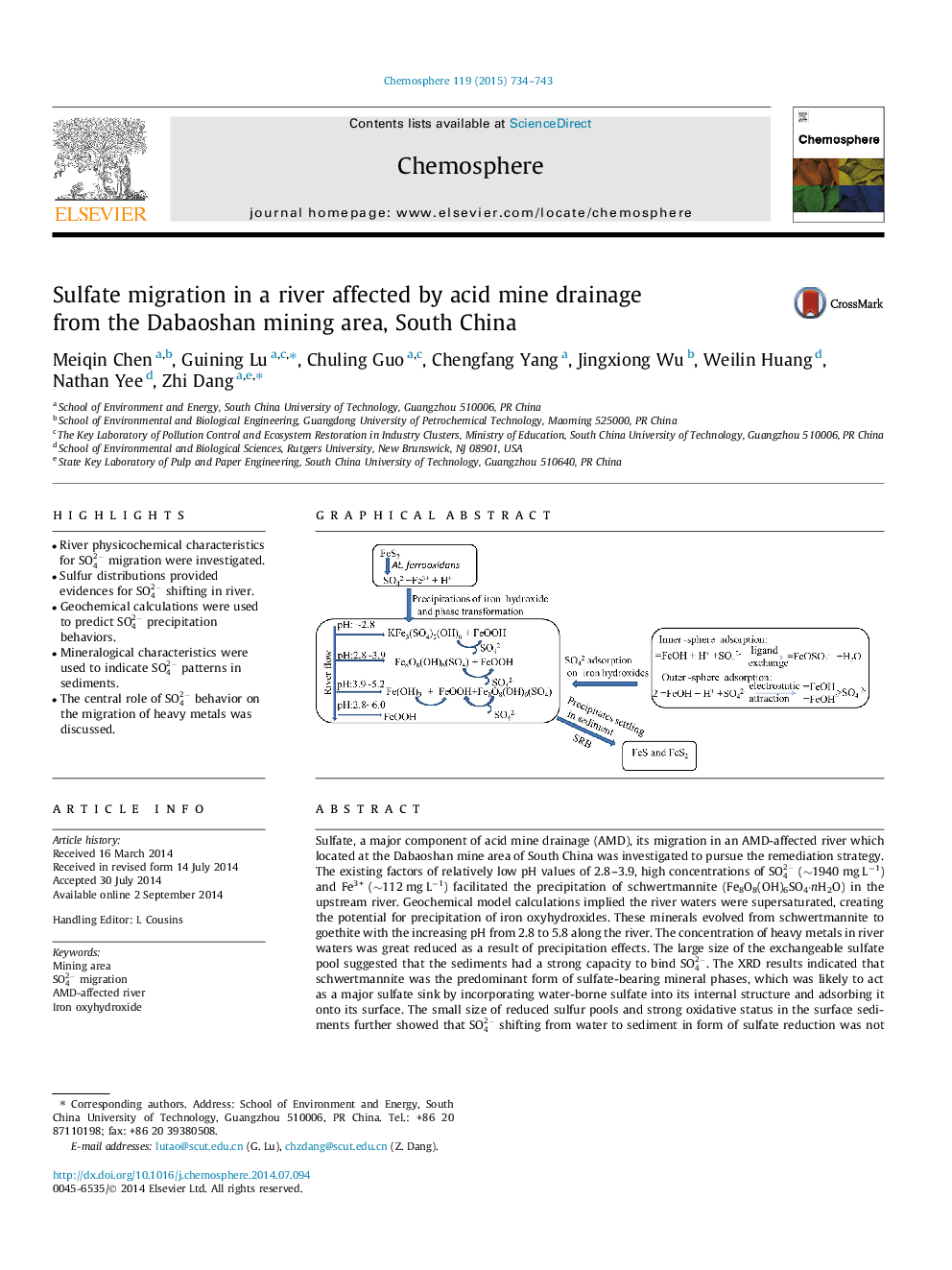| کد مقاله | کد نشریه | سال انتشار | مقاله انگلیسی | نسخه تمام متن |
|---|---|---|---|---|
| 4408689 | 1618852 | 2015 | 10 صفحه PDF | دانلود رایگان |
• River physicochemical characteristics for SO42- migration were investigated.
• Sulfur distributions provided evidences for SO42- shifting in river.
• Geochemical calculations were used to predict SO42- precipitation behaviors.
• Mineralogical characteristics were used to indicate SO42- patterns in sediments.
• The central role of SO42- behavior on the migration of heavy metals was discussed.
Sulfate, a major component of acid mine drainage (AMD), its migration in an AMD-affected river which located at the Dabaoshan mine area of South China was investigated to pursue the remediation strategy. The existing factors of relatively low pH values of 2.8–3.9, high concentrations of SO42- (∼1940 mg L−1) and Fe3+ (∼112 mg L−1) facilitated the precipitation of schwertmannite (Fe8O8(OH)6SO4·nH2O) in the upstream river. Geochemical model calculations implied the river waters were supersaturated, creating the potential for precipitation of iron oxyhydroxides. These minerals evolved from schwertmannite to goethite with the increasing pH from 2.8 to 5.8 along the river. The concentration of heavy metals in river waters was great reduced as a result of precipitation effects. The large size of the exchangeable sulfate pool suggested that the sediments had a strong capacity to bind SO42-. The XRD results indicated that schwertmannite was the predominant form of sulfate-bearing mineral phases, which was likely to act as a major sulfate sink by incorporating water-borne sulfate into its internal structure and adsorbing it onto its surface. The small size of reduced sulfur pools and strong oxidative status in the surface sediments further showed that SO42- shifting from water to sediment in form of sulfate reduction was not activated. In short, precipitation of sulfate-rich iron oxyhydroxides and subsequent SO42- adsorption on these minerals as well as water dilution contributed to the attenuation of SO42- along the river waters.
Figure optionsDownload as PowerPoint slide
Journal: Chemosphere - Volume 119, January 2015, Pages 734–743
